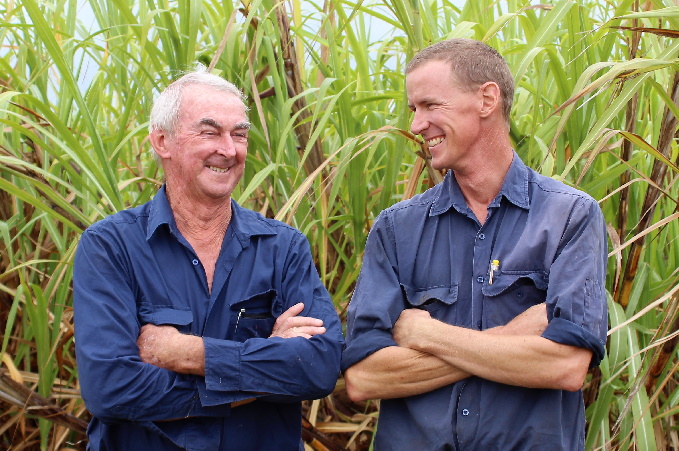NSW is home to some 500 sugarcane farming families, many of whom are multi-generational farmers. When you look at the combination of the agribusiness, location and lifestyle of sugarcane farming in NSW, it’s not hard to appreciate why it is such an appealing occupation.
Tom and his son Marty are fourth and fifth generation respectively in the Walsh farming family. The original family farm dates back to the early days of local settlement and remains central to the current day Walsh farming enterprise.
Tom and his wife Julie have always been involved in the farming side of the Walsh family, but have also run their own successful wholesale business in Ballina whilst raising four children.
Marty is the youngest of the brood and only son. He declares that he has always wanted to be a farmer, even during his time at school and whilst working in metal fabrication. He and his wife Donna are now raising their own family having recently settled on a 110-hectare cane farm with a family home idyllically positioned overlooking the Richmond River.
Tom and Marty aren’t just father and son, they are best mates and business partners. When asked what the best aspect of their joint farming operation is, they answer in unison; “Working together.”
When they are not busy working their multiple sugar cane properties, Marty can be found working on his other passion – his Ford ute. He and his Dad transition from farmers to ‘Team Walsh Racing’ whenever the opportunity arises, frequently travelling to the Queensland Raceway just a few hours’ drive away for competitions and time trials.
Whilst the pair are currently enjoying the favourable seasons and high sugar prices, they have struggled through some challenging times. Over the past decade mother nature has thrown the Northern Rivers some of the wettest seasons on record.
During this time, Tom and Marty have worked together to introduce a number of farming practices that help combat the wet as well as making their overall operation more efficient and productive.
Moving all of their 440 hectares to 1.8 metre rows has taken almost eight years, but offers immediate returns. Less rows per paddock, planted to dual rows, mean paddocks can be worked in less time. Furthermore, controlled traffic areas between the rows deliver a compacted inter row that can carry the weight of tractors and harvesters even after a period of moderate wet weather. Both sugar cane and rotational crops such as soya bean are planted using disc opener planters which also avoid additional soil disturbance and help preserve the inter row.
Having recently invested in new equipment such as a 5.7 metre rotary hoe and a prime mover for transporting their gear safely and economically between properties, the pair feel they have reached their peak (for the time being!). The number of hectares under cane and the yield that they produce are a manageable and profitable amount for the partnership.
Both Tom and Marty are now fully focussed on continuing to make their farming operation as productive as possible through sensible and sustainable farming practices. They are so satisfied with their work-life balance that Tom proclaimed; “If I were to win lotto I would build a bigger shed to house all my new machinery and keep on farming – because I am doing what I love and I’m doing it with my best mate.”

